Mandap the residence of the divine
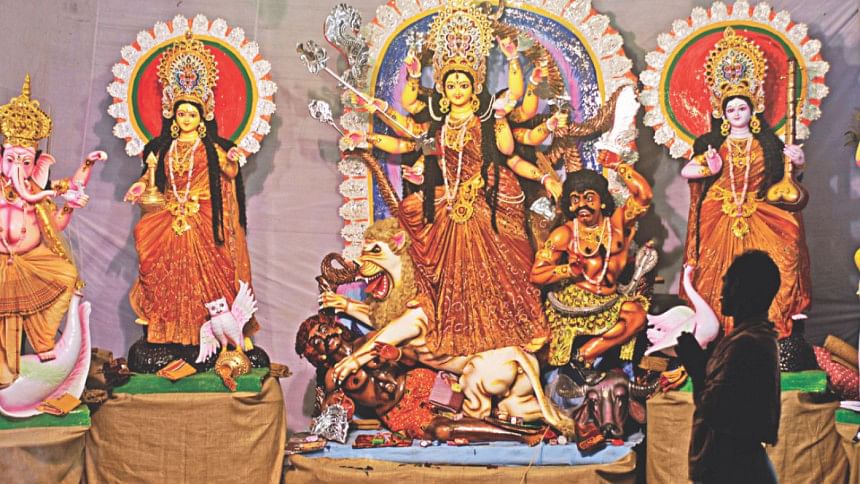
The puja mandap, where Durga rests with her children, is the output of devotion and rites melded as one. Yet, very little thought is spared for the creators, the artists and the sculptors of these awe striking creations.
Speaking with Shankar Dhar, a sculptor well sought-after at home and abroad, we can catch a glimpse of the mandaps and the art that is an inherent part of it.
"If you want to talk about the mandap, you have to begin with the pratima (the figurine of the Goddess). We, the artists, the Kumars, make the pratima as it is mentioned in the Sri Sri Chandi Scripture (which is also known as the Devi Mahatmya, and is recited during the puja).
It dictates in which direction the lion would face, where the Mahishahur would lie, and even the colour that should be used-- after all, it is a representation of Durga and her family as they visit this mortal plane, and it is our bound duty as artists to uphold the sanctity of her visit."
Dhar also explains that in the days of old, the pratima shilpi (artist/maker) started with the worship of the kathamo, or the structure. Everything is created from objects abundant in nature — the bamboo for the pandal, the straw and the soil for the figurines. The underlying belief is that by starting with all things natural, it is ensured that when Devi Durga is immersed in the water, all the elements return to their original place.
The belief remains that the blessings borne by the pratima will dilute into the river and bless the path of the water as it flows.
"Pratima and mandap are two separate things, but at the same time, they are related to each other," Dhar adds. He goes on to say that that the mandap has to remain pure while the pratima is made with purified elements. He emphasises on the aesthetics and purity of the area of worship as well as the pratima itself, otherwise it cannot even begin as a part of puja.
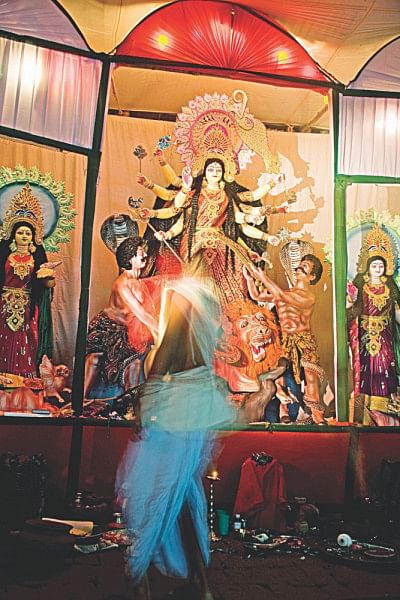
Coming to how much mandaps have changed or rather transformed with time, Shankar Dhar reminisces about the mandaps of the past, which housed large figurines of the Goddess, as well as her entourage. He feels the designs have improved and adapted to various constraints, including space and people's demands.
The artists, too, have built up a healthy bit of competition among themselves, which has led to the overall stage decoration taking a bolder turn.
With over thirty years of experience designing mandaps and building pratimas, Shankar Dhar had some interesting observations. He has observed that other than a pranam and a short prayer, the lines of devotees hardly paid any attention to the detail the artists had worked so hard on.
He identified that the worshippers awaiting their turn to receive their blessings could very well be entertained and brought in to the puja ambience through various forms of entertainment.
Dhar incorporated tales of old as well as legends within the stage and created a point of interest that could hold the attention of those awaiting their turns.
For starters, he not only included segments from the Sri Sri Chandi, but also the story of origin of the Durga Puja as Ram Chandra invoked the spirit of the Devi with 108 lotuses. Dhar is also one of the very first in using sound and lighting systems to create a sense of movement in puja mandaps on this side of celebrations.
These are only the very beginning of the fame that is associated with the name of Shankar Dhar, but at his core, he has always wanted to secure the employment of numerous karigors (artisans) who are associated with the making of the pratima and the mandap and the overall creations during the Durga Puja.
"I want to bring a change for these people, a betterment of their situation and lifestyle. There is very little appreciation of these artists," said Dhar. He mentioned the saddening condition where these makers are kept apart in poor accommodation when they have to work somewhere.
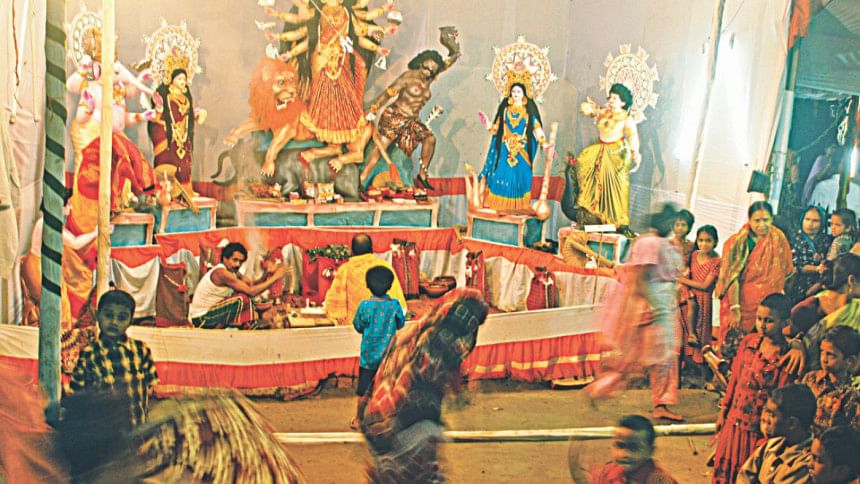
Dhar can only accept them as they are — as shilpi/artists capable of creating the true face of a divinity. "If they are not provided with proper sustenance and resting places, how can they work and create divine art?" he asks emphatically.
"I try to make people see beyond this discrimination. True talent is scattered in the villages and the alleyways, and what I try to do is to bring them together," he continues.
"These artists are only acknowledged only for the few days of the Durga Puja. I want to see them in a position where they are honoured throughout the year for the work they do," he added.
Referring to the artists, there is still no unified forum in Bangladesh. Dhar attempted to change this, but was not rewarded with success. Talking about puja celebrations he has seen in Kolkata, Dhar mentions the hefty amount of competition in terms of decorations and innovations. He believes this too works as motivation for the artists to hone their skills and pass on the art form to the next generation.
For now, he hopes to reach a position with all other artists — aspiring, intermediate, and expert — where they are acknowledged for their astounding work.
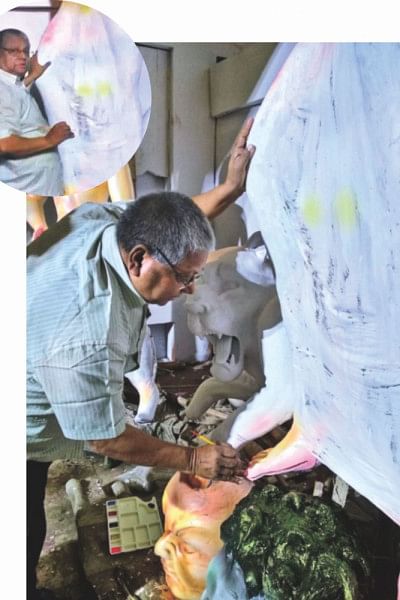
A portrait of the artist
Shankar Dhar, born in 1954 to a family of carpenters, was immersed in making idols from his early childhood. Although he was affected by polio at two years of age, he never let this handicap deter him in his work and art.
Currently residing in Panni Tola, Tanti Bazaar, Dhaka, he is adamant in moving forward with his work in art and belief. Out of his many endeavours, his prized work in progress is now the Shatavisa Village Park in Sri Mangal, Sylhet. He sees it as step into providing a place of comfort and peace for those who seek it.
As a sculptor, he has worked with clay, metal and wood throughout his years and continues to strive for the best that can be accomplished. He acknowledges that he has no academic background, but his observations and work throughout the years have by far outweighed this particular lacking.
His has worked with various houses in Kolkata. Other than his work on religious figures, his sculptures have been showcased in various European countries. Dhar wishes to remain in the quiet and solitude that he is in now as he continues to build up his oeuvre, embracing all that was, is and may be.
Photo courtesy: Shankar Dhar

 For all latest news, follow The Daily Star's Google News channel.
For all latest news, follow The Daily Star's Google News channel. 





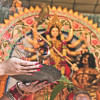


Comments